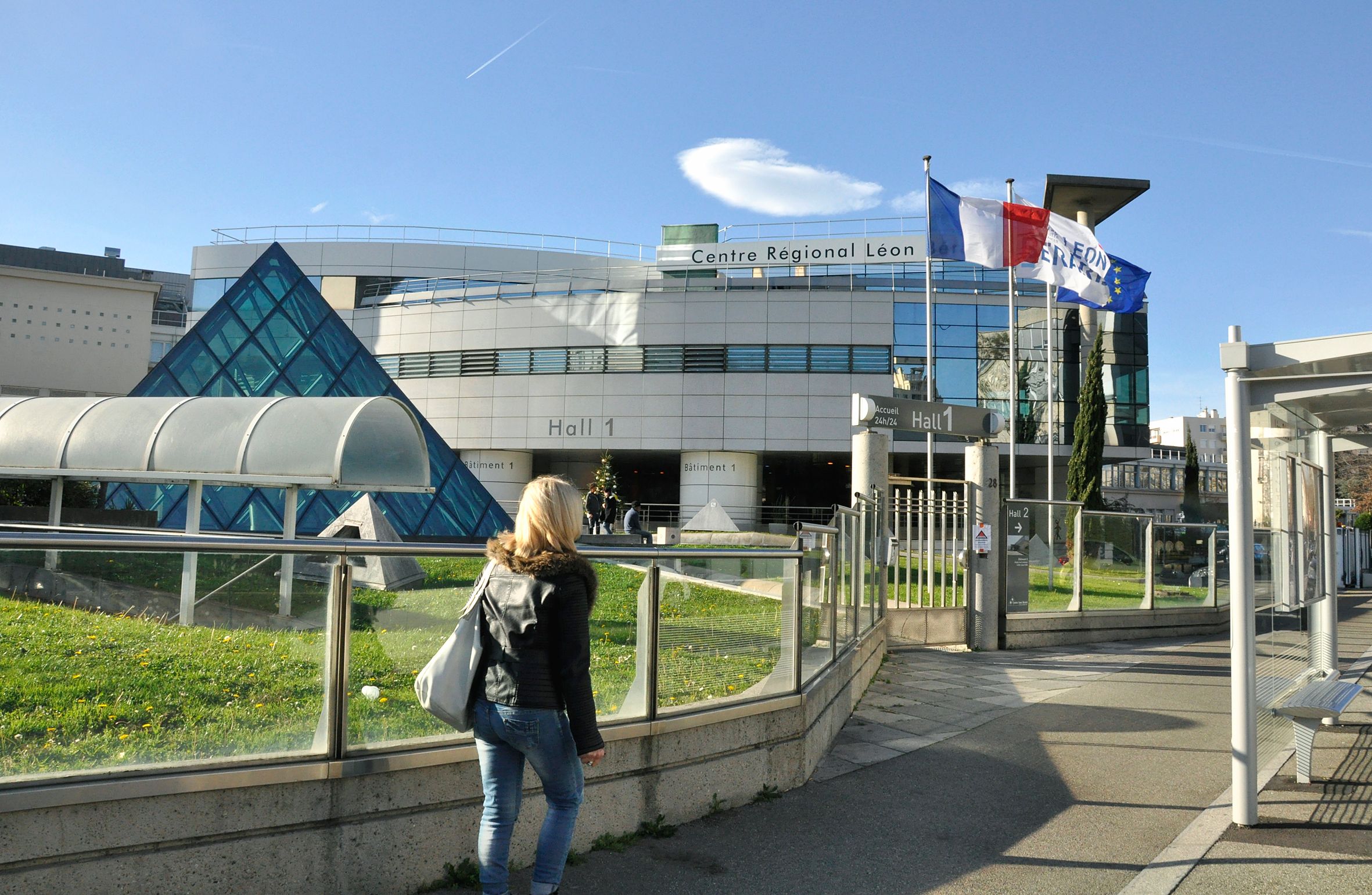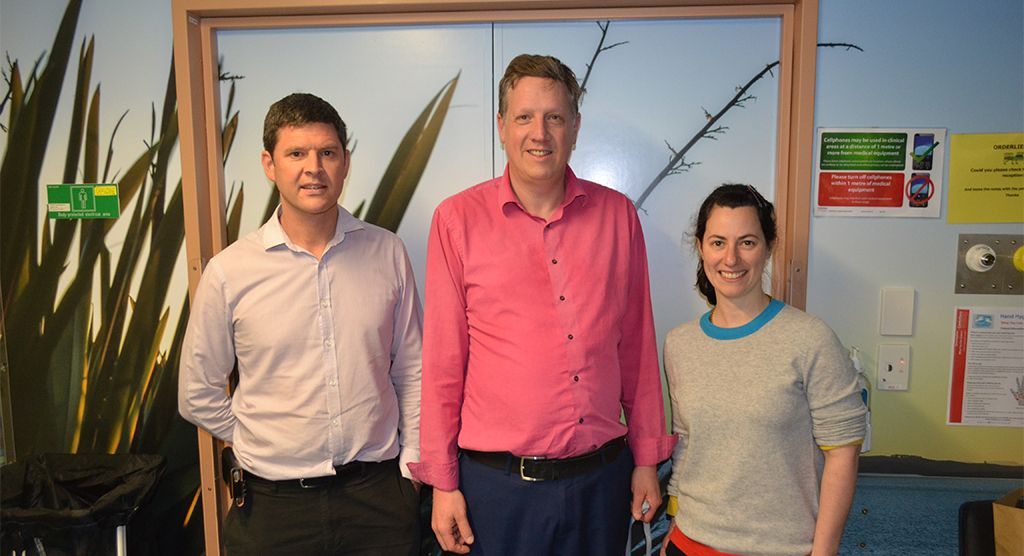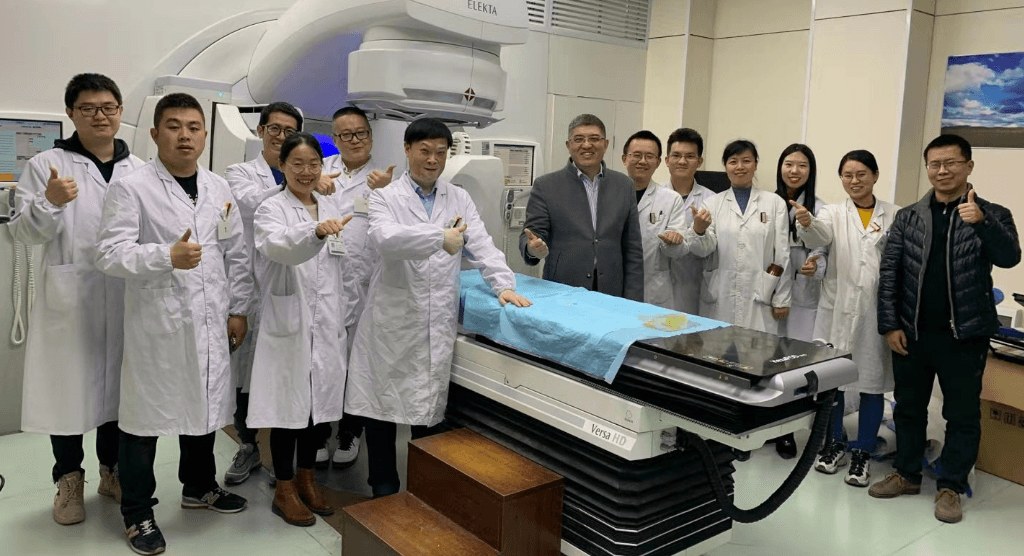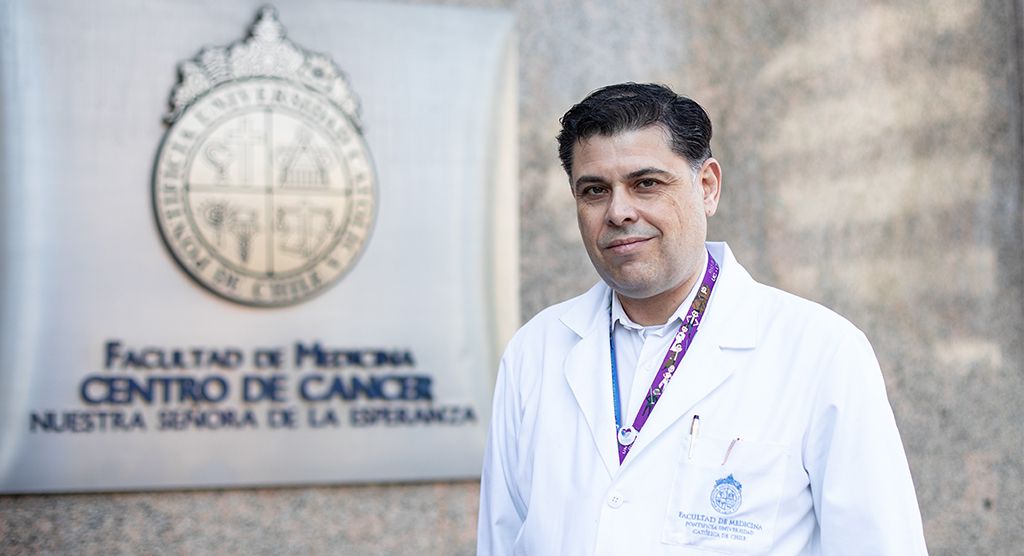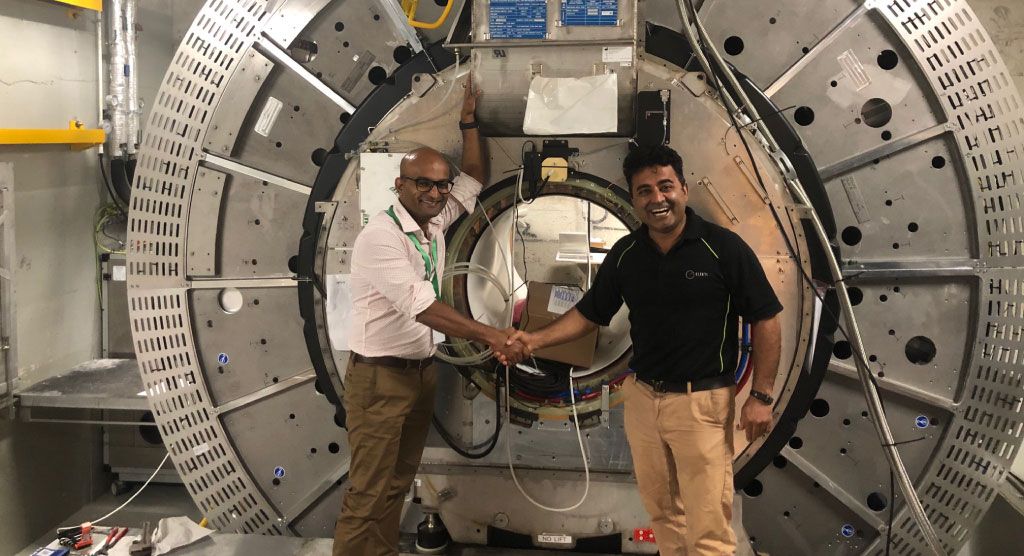From acceptance testing to linac go-live in nine days

Franciscan Health harnesses Elekta’s Accelerated Go Live to shave weeks off accelerator commissioning

In 2018, clinicians at Franciscan Health benefited from the fruits of their own labor by taking advantage of Accelerated Go Live (AGL), Elekta’s ultra-efficient install and commissioning program. The center was one of the sites involved in creating the reference beam model data used in AGL, so when Franciscan acquired a new Versa HD™ system for its Mooresville, Indiana site, center officials seized the opportunity to experience the benefits of AGL for themselves.
The goal of AGL is to bring clinics to operational status much faster than the traditional commissioning process, thus enabling a center to reach clinical go-live quicker. By optimizing processes and reducing the time it takes to install and commission a new linac by more than 65 percent, AGL minimizes downtime and disruption to the clinic.
AGL significantly reduces data gathering requirements by providing high quality, reliable, reference beam data (see below), including beam profiles and percent depth doses (PDD) for all photon and electron energies.1 The reference beam data is transferrable between the same configuration machines across a radiation therapy department, allowing weeks to be shaved off the commissioning process and enhancing safety by eliminating potential errors that could occur during data collection. (see sidebar: Why do we need reference data?)
Reliability of Elekta AGL reference beam data1
- Dosimetric data demonstrated good agreement between factory and reference site measurements.
- Photon beam quality varied <0.4% between reference centers for all photo energies
- Gamma analysis demonstrated 95% agreement within 1% and 1 mm for PDD, and within 2% and 2 mm for beam profiles
- Output factors (Scp) agreed within 0.2% on average
Commissioning a new machine
“The new Versa HD was installed and ready for commissioning by April 26, 2018,” says Christopher F. Njeh, PhD, Chief Medical Physicist and Radiation Safety Officer at Franciscan Health, which provides radiation therapy services at eight centers throughout Indiana and Illinois. “Historically, the calculation time for Monaco® beam models without AGL was around three to four weeks. With prior data collection and subsequent TPS validation, commissioning could easily take five to six weeks. By using AGL, we were hoping to cut this down to three weeks.”
The new machine’s parameters were matched to the reference parameters for each of the five photon and four electron energies. The mechanical testing component of Customer Acceptance Testing (CAT) then started on April 27 and the beam analysis component occurred on April 28. Beam matching took a total of six hours.
“Although the AAPM task group 106 estimates it will take four to six weeks to commission a machine, in our case we were able to accept and commission our new Versa HD in just nine days.”
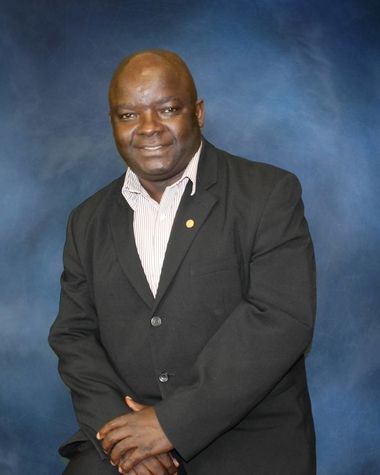
“Our next step was to demonstrate the accuracy of the beam matching. We uploaded the reference profiles to a Wellhofer water phantom system. We then merged the AGL reference data for percent depth dose (PDD), beam profiles and output factors with our own measured data and the agreement was excellent (Figures 1-2, Table 1),” he explains. “We achieved a greater than 95 percent pass rate with gamma analysis criteria of 1 percent and 1 mm, which is more stringent than the industry standard. Although the AAPM task group 106 estimates it will take four to six weeks to commission a machine, in our case we were able to accept and commission our new Versa HD in just nine days.”
In addition to beam data collection, the department performed Monaco treatment planning validation using Elekta’s Express Quality Assurance (QA) package. This solution is designed to rigorously test the commissioning of the planning software for a specific machine. Again, all QA analyses had a pass rate of 95 percent or higher at gamma criteria of 2 percent and 2 mm.
Then, to further validate the AGL process, the Franciscan Health team took 26 VMAT QA plans – delivered previously using the existing Versa HD at Indianapolis – and brought them to the new machine at Mooresville. These VMAT QA plans (six pelvis, four head-and-neck, five lung, four SRS and seven lung SBRT) were delivered again using the machine and software that had been newly commissioned using the AGL reference data. All plans had a pass rate higher than 96.7 percent at gamma criteria of 2 percent and 2 mm.
“Our validation yielded excellent results, showing the good agreement achieved using AGL reference data and the accuracy of Elekta machine configuration.”
“Our validation yielded excellent results, showing the good agreement achieved using AGL reference data and the accuracy of Elekta machine configuration,” Dr. Njeh observes.
AGL benefits both patients and bottom line
The Franciscan Health experience of commissioning a new Versa HD using the AGL reference data set was extremely positive. With AGL the center was able to match its new Versa HD to reference beam data for all energies within six hours. A further two days of spot checking demonstrated how well all energies matched the reference data for all clinically relevant field sizes.

CAT to go-live for the new Versa HD at the Franciscan Health Mooresville site took just nine working days – compared to the previous five to six weeks required – which represents a reduction in commissioning time of approximately 65 percent. This meant they could start treating patients much sooner compared to the previous commissioning process. Not only did this reduce patient wait times, but it also allowed the center to generate income from their new Versa HD more quickly.
“Having an identical linear accelerator that is beam matched to an existing machine has many advantages,” Dr. Njeh says. “By providing an identical back-up system, it makes the logistics within the department very easy. It provides versatility to move patients between machines, if necessary, and also reduces the learning curve for staff moving around the department.
“The reference data are collected under very well-controlled conditions, using appropriate chambers,” he adds. “I am a great supporter of using reference beam data because it reduces sources of error in the commissioning process. As physicists, our objective is to minimize errors, so I am very happy with the results we achieved using AGL and I know we can use it with confidence in my department.”
References
- Technical study (WIP): Christopher F. Njeh, PhD
- Das, IJ, Cheng, C-W, Watts, RJ et al (2008) Report No. 106 – Accelerator beam data commissioning equipment and procedures: Report of the TG-106 of the Therapy Physics Committee of the AAPM. Med. Phys. 35: 4186-4215.
- Shafiq, J, Barton, M, Noble, D et al (2009) An international review of patient safety measures in radiotherapy practice. Radiotherapy & Oncology 92(1): 15-21.
Why do we need reference data?
Traditionally, the installation and commissioning of new linear accelerators and treatment planning systems is very time-consuming. In the past, machine installation would typically take about seven weeks, with four more weeks for acceptance testing and beam modeling. The AAPM task group report 1062 states that up to six weeks are required to commission a machine because of the volume of beam data that needs to be acquired and processed, such as percentage depth dose (PDD) curves, beam profiles and output factors. The longer the commissioning process takes, the bigger the delay until the first patient is treated. The number of measurements involved in commissioning a linear accelerator is so large that the entire process is considered among the most complex and error-prone in radiotherapy today. A report in 2009 revealed that about 3,000 errors were reported in radiation therapy between 1976 and 2007, and almost one third of these errors occurred during commissioning.3 These errors are systematic, not random, therefore every patient treated on that machine will be affected until the error is discovered. Consequently, it is imperative that radiation therapy machine commissioning is performed accurately.Figure 1. Comparison of percent depth dose (PDD) curves
1.1 Reference data versus Mooresville Versa HD (6 MV)

| Depth | Ref Data | Mooresville |
|---|---|---|
| 10 cm | 65.7% | 65.8% |
| 20 cm | 37.6% | 37.6% |
1.2 Reference data versus Mooresville Versa HD (10 MV FFF)

| Depth | Ref Data | Mooresville |
|---|---|---|
| 10 cm | 65.7% | 65.8% |
| 20 cm | 37.6% | 37.6% |

Figure 2. Comparison of inplane 30 cm x 30 cm beam profiles
NB. All Mooresville scans were acquired using PTW tank and PTW TN31010 chambers.
2.1 Reference data versus Mooresville Versa HD (6 MV)

2.2 Reference data versus Mooresville Versa HD (10 MV FFF)

| 6 MV | 10 MV FFF | |||
| Field (cm) | AGL reference data | Mooresville Versa HD (% difference) | AGL reference data | Mooresville Versa HD (% difference) |
| 2 | 0.799 | 0.1% | 0.837 | -0.3% |
| 5 | 0.906 | 0.0% | 0.946 | -0.1% |
| 10 | 1.000 | 0.0% | 1.000 | 0.0% |
| 20 | 1.096 | 0.1% | 1.041 | 0.1% |
| 40 | 1.163 | 0.1% | 1.061 | 0.0% |
